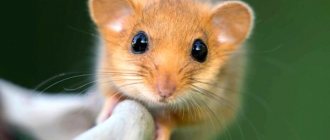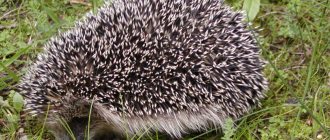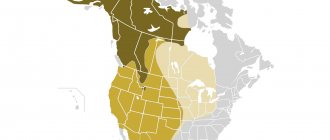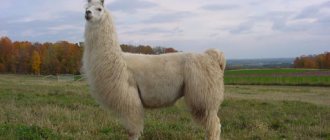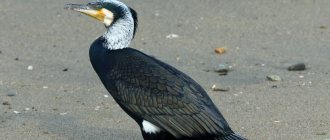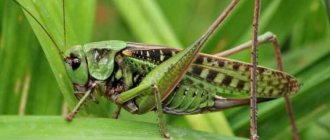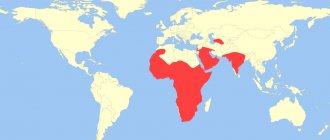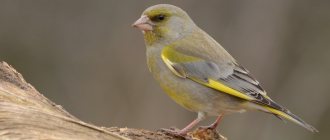- Wild animals
- >>
- Mammals
The garden dormouse is considered a unique animal.
She is a representative of rodents. The animal leads a hidden, nocturnal lifestyle. Because of this, many have never even heard of such a beast. The dormouse got its name because, having accumulated fat reserves, it goes into hibernation in the fall and remains there until spring. Previously, these cute little animals, which looked like a mouse that had changed its fur coat, were very common. However, today they are listed in the international Red Book. The animals were exterminated en masse due to the fact that they are carriers of infectious diseases, and also because they cause serious damage to agricultural land.
Origin of the species and description
Photo: Garden Dormouse
Garden dormouse is considered one of the oldest representatives of the rodent species. Aristotle mentioned it in his writings. Translated from ancient Greek, its name means “beautiful, sweet, graceful” animal.
Researchers claim that the ancient ancestors of these cute animals were born just over 6,000,000 years ago during the Eocene period. The founder of these rodents was the genus Gliravus. Representatives of this have existed on earth for approximately 20,000,000 years. Subsequently, he gave rise to the genus of forest dormouse. These are the most primitive representatives of the dormouse family.
Video: Garden Dormouse
According to preliminary data, the ancient ancestors of the garden dormouse lived in eastern Eurasia and Africa. Scientists zoologists note that the heyday and greatest distribution of the dormouse genus occurs during the Miocene period. It was at this time that the dormouse genus was divided into more than two dozen subspecies. Currently, only six of the previously existing animal species exist. Animals belong to the class of mammals, the order of rodents. They are members of the dormouse family, a species of garden dormouse.
Interesting facts about the animal
Interesting facts about the garden dormouse:
- Sonya moves spasmodically; the tracks of her hind paws often overlap her front paws.
- The mammal significantly reduces the number of small birds by destroying nests and attacking chicks.
- In autumn, before wintering, the weight of the animal increases up to 3 times the norm.
- Due to the proximity of the animal’s nests to the ground, a third of the population does not survive harsh winters and dies.
- Average life expectancy is up to 5 years.
- Occasionally, garden dormouse can be found in the zoo. The animal can also be purchased at pet stores for home keeping.
- Sonya (presumably a garden dormouse) is one of the heroes of Lewis Carroll's Alice in Wonderland.
Like all living organisms, dormouse are unique and beautiful creatures that currently require attention and protection from humans.
Appearance and features
Photo: Animal garden dormouse
In appearance they are incredibly similar to gray mice. Body length is 14.5-15.5 centimeters. Body weight 55-150 grams. The animals have a very long, thin tail. Its length is almost equal to the length of the body and is 11-13 centimeters. The tail has short hair, evenly distributed over its entire surface. At the very end, the wool is collected into a small, fluffy brush. The tail most often has three coat colors. At the very bottom it is white, light pink. It is gray on both sides and brownish at the base.
The limbs have uneven length. The hind legs are significantly longer than the front legs. There are four toes on the front and hind legs. The third and fourth fingers stand out on the front paws - they are longer. On the hind limbs the fourth finger is longer than the others. The feet are narrow and elongated. The muzzle is round, slightly pointed. The garden dormouse has large round ears and huge black eyes. The nose is framed by thin, long whiskers.
The coat is short, thick and soft. The color may vary depending on the climate in the habitat. They are mainly distinguished by gray or brown fur. The area of the belly, neck, chest and limbs is covered with light-colored hair, almost white. A distinctive feature of the garden dormouse is a black stripe that runs from the eye area to the space behind the ear. Juvenile garden dormouse have brighter, more contrasting coat colors. With age, the shades of the coat fade.
Where does the garden dormouse live?
Photo: Garden Dormouse Red Book
Garden dormouse mainly lives in forested areas, mainly in flat or slightly hilly areas. Can settle in abandoned gardens.
Geographical habitat areas of the garden dormouse:
- northern regions of Africa;
- territory of Eastern Europe;
- Altai;
- almost all regions of Belarus;
- partly the territory of Russia - Leningrad, Novgorod, Pskov regions, the territory of the Lower Urals, Lower Kama region;
- some areas of Asia Minor;
- China;
- Japan.
Garden dormouse loves forest areas dominated by broad-leaved trees. Less common in forests with coniferous trees. Often abandoned garden farms or agricultural lands are chosen as habitat areas. They love places with tall, dense bushes. Fruit orchards and city park areas are often chosen as settlements.
They are not afraid of humans, so they often settle near human settlements. There are even cases of taming garden dormouse. However, it is worth noting that only young individuals can be tamed by humans. In addition, these little rodents don’t really like it when someone touches them.
Spreading
In the range of the forest dormouse it is confined to the range. In Transcaucasia, the forest dormouse is associated with various types of forests. The western border of the range is the northern slope of the Alps. The range of the forest dormouse includes the entire Balkan Peninsula and the mainland. On the Apennine Peninsula, forest dormouse is found only in. In Eastern Europe it is found almost everywhere except in the north. Not available in the regions. It is also missing in . Local populations are known in , , , in the north , , in the west . The eastern border of the range is the western slope.
On the territory of Russia, the forest dormouse is distributed north to and southwest to. The border of the forest dormouse's range runs along the right bank. The dormouse is distributed from the basin and further south, covering almost the entire Caucasus region.
What does the garden dormouse eat?
Photo: Rodent garden dormouse
The garden dormouse is considered an omnivore. It feeds on both plant foods and animal foods. Zoologists say that the main part of the diet is this type of food.
What is included in the animal's diet:
- bird eggs;
- chicks falling out of the nest;
- larvae of various insects;
- locusts;
- caterpillars;
- fruits;
- berries;
- moths;
- beetles, spiders, centipedes, worms;
- snails;
- leaves;
- fruit;
- seeds;
- roots;
- young shoots of various types of vegetation.
Due to hibernation, many individuals eat intensively all summer, and some also tend to store reserves. Garden dormouse reserves, like hazel dormouse, are destroyed in early spring. The structure of the garden dormouse's limbs facilitates active feeding on the ground. In addition, they are considered skilled hunters. They can catch a small bird or a butterfly. Able to climb trees in search of bird nests.
It drinks bird eggs by making a hole in the eggs with its teeth. They eat snails in the same way by biting through their shells. During periods of famine and lack of food, cases of hunting even gray field mice are known. A distinctive feature is that even with a large amount of plant food, seeds and fruits, they need regular consumption of food of animal origin. If rodents do not eat meat for 5-7 days, they fall into a stupor.
Links
| : Incorrect or missing image | To improve this article it is desirable:
|
This is a draft article about rodents. You can help the project by adding to it.
Security status
: Incorrect or missing image
Close to Vulnerable IUCN 3.1 Near Threatened
:
This is interesting: What types of sharks are the largest on Earth - list, photos and characteristics
Features of character and lifestyle
Photo: Garden Dormouse
The garden dormouse is predominantly nocturnal. Animals also hunt and get food at night. However, during the mating period, which occurs in the spring-summer period, they can be active during daylight hours. Rodents are considered solitary animals. Short-term pairs are formed only for the duration of mating. However, they are very short-lived.
As a home, just like forest dormouses, they can choose empty mouse holes, squirrel hollows, bird nests, and rotten tree cores. They often settle under roofs or in cracks in residential buildings. The dwelling has a spherical shape. To arrange it, garden dormouse uses various natural materials. Foliage, grass, moss, animal hair or bird feathers are suitable for this.
All summer long, animals eat intensively, building up fatty tissue, and also set up their home. The survival of the animal during hibernation depends on how reliable and secluded the home is. According to statistics, approximately a third of individuals die in severe frosts if the shelter is not insufficiently insulated. Young animals from the same litter spend the winter together. This makes it easier for them to survive in the same shelter, keeping each other warm. Garden dormouse sleep curled up, legs tucked under, and covered with their tail.
In mid-autumn they go into hibernation, which lasts six months. During hibernation, all metabolic processes, breathing rates, and pulse slow down in animals. During hibernation, the garden dormouse loses up to half its body weight.
They are considered excellent hunters. They have instant response and speed. Dormouses are capable of making a sound reminiscent of the chirping of insects. A family that goes for a walk resembles a small line. They move quickly after each other.
Seasonal monastery
Dormice lie down for the winter (hibernation) in September – October.
The winter nest is started in a dry area under the roots of trees or in rebuilt mouse holes. The nimble rodent loves to inhabit the attics of houses, barns or hunting lodges. The garden dormouse weaves a dense ball of branches, dry grass, moss and bird feathers. The inside of such a house is lined with wool.
Sleepyheads can doze off in a friendly group, lying on their backs, stretching their tail over their stomachs and clinging closely to their neighbor. But more often they sleep curled up, pressing their paws and muzzle to their body and wrapping their tail around them.
In May, full of energy, animals leave their winter shelter and build their spherical houses in hollows, abandoned hives, birdhouses, dilapidated stumps or bird nests.
The garden dormouse has taken root well in civilized human habitation - it is unpretentious, calm, and does not require much attention . Photo by: mmboom.
Social structure and reproduction
Photo: Baby garden dormouse
After a long hibernation, the mating period begins. When animals wake up, they tend to mark their territory and designate their range. The mating season begins in mid-April and lasts until early July. Females tend to attract males with the help of special loud sounds, reminiscent of a high-pitched whistle.
Males, in response to such a loud, heart-rending sound, emit something similar to a dull muttering. If several males simultaneously claim one female, they drive each other away, and in some cases they may bite. For some time, garden dormice can even form a family. After mating, the females either drive out the males or leave the home themselves.
Pregnancy lasts about three weeks. As birth approaches, the female begins to look for a place to give birth. For these reasons, she builds a hole, often several at the same time. One female produces three to six cubs at a time. The born offspring are absolutely helpless. The cubs are blind, deaf and have no fur.
All care for the offspring lies on the shoulders of the mother. She takes care of them and feeds them with milk. If she senses danger to her offspring, she immediately carries them to a safe shelter by the scruff of the neck.
After 3 weeks from birth, the cubs open their eyes. After this, they grow quickly and gain body weight. A month after birth, the young begin to independently obtain food and hunt. Grown-up kids go for a walk and run in single file after their mother. The first cub clings to its mother's fur with its teeth. Subsequent ones cling to each other with their paws or teeth.
Over the course of one year, a sexually mature female produces cubs twice. Upon reaching two months of age, they lead a separate lifestyle. The average lifespan of an individual under natural conditions is 4.5-6 years.
Natural enemies of garden dormouse
Photo: Animal garden dormouse
The natural enemies of the garden dormouse are:
- martens;
- foxes;
- owls, hawks, kites;
- domestic dogs and cats;
- marten and ermine.
Competitors for food are considered to be gray rats, which destroy garden dormouse in large numbers. People and their activities are considered the most dangerous enemy of rodents. Man destroys them in large numbers, consciously and unintentionally. People destroy animals because of the damage they cause to fields and gardens. Rodents eat seeds, fruits and tree fruits. Garden dormouses are hunted by dogs and cats, for whom they are of particular interest.
There are known cases of the destruction of animals for the purpose of obtaining skins. They are used by humans as secondary fur.
The use of chemical compounds and fertilizers of non-natural origin also contributes to the reduction of populations of the garden dormouse species. Representatives of the dormouse family have a huge number of enemies in their natural habitat. The most dangerous are considered to be humans, owls and eagle owls, as well as gray rats. Despite its speed and incredible dexterity, the garden dormouse cannot always escape from attacks by predatory animals and birds. Living close to human habitation makes them prey for domestic animals.
Threats
Over the past 30 years, the number of garden dormouse in Eastern Europe has declined significantly and it now occupies less than 50 percent of its former range. The reason for these declines is not fully understood, but it is believed to be due to habitat changes and destruction. Fortunately, populations in Western Europe appear to be stable. However, it has been suggested that competition with the gray rat (Rattus norvegicus) threatens garden dormouse in some regions such as Corsica. In addition, in certain areas these rodents are considered pests.
Video
- https://simple-fauna.ru/wild-animals/sadovaya-sonya/https://ecoportal.info/sonya-sadovaya/https://givotniymir.ru/sadovaya-sonya-zhivotnoe-obraz-zhizni-i- sreda-obitaniya-sadovoj-soni/https://pitomci.nemo.su/articles/229-sadovaja-sonja-opisanie-sreda-obitanija-chem-pitaetsja-foto-video.htmlhttps://zoograf.guru/gryzuny/ interesnoe-zhivotnoe-sonya-kak-ih-soderzhat.htmlhttps://natworld.info/zhivotnye/sadovaja-sonja-opisanie-obraz-zhizni-pitanie-foto-i-videohttps://zakustom.com/blog/43006307430/ Sadovaya-sonya—-obayatelnyiy-gryizun,-nezhelanyiy-gost-sadovo?nr=1
Population and species status
Photo: Garden dormouse rodent
Recently, garden dormouse populations have declined significantly. In some regions this species has completely disappeared. The animals are listed in the International Red Book and assigned the status of “endangered species.” The reduction in numbers is caused by attacks by gray rats, as well as birds of prey, forest and domestic carnivores. The main cause of extermination is considered to be human activity. Deforestation, clearing of trees containing trees.
Compared to their original range, their habitat has been reduced by half. Humans destroy them in large numbers because they pose a serious threat as carriers of infectious diseases. Another reason for mass destruction by humans is the damage they cause to agricultural land.
In addition, a large number of individuals die from severe frosts during hibernation. Owls, which lead a similarly nocturnal lifestyle, pose a particular danger to small fluffy rodents. They go hunting in the dark, when the garden dormouse is most active. Today, the most numerous populations are located in western Europe. In particular Germany, the Czech Republic, France. Rodents are also common in Belarus.
Range, habitats
Polchok is widespread in the mountain and lowland forests of Europe, the Caucasus and Transcaucasia, and is found from the northern part of Spain and France to Turkey, the Volga region and the northern part of Iran. The species was introduced into Great Britain (Chiltern Hills). The dormouse is found on the island territories of the Mediterranean Sea, including Sardinia, Corsica, Sicily, Crete and Corfu, as well as Turkmenistan near Ashgabat.
On the territory of the Russian Federation, the dormouse is found very unevenly. The habitat of this mammal is represented by several isolated areas of different sizes, often located at a considerable distance from each other. Dormouse can be found in the Kursk region and in the Volga river basin, including the Volga-Kama region, Nizhny Novgorod region, Tatarstan, Chuvashia and Bashkiria, Samara region.
In the north of our country, the distribution of the rodent is limited to the Oka River. In the steppe southern regions of the European part, the dormouse is absent. The most common and numerous such animal is in Transcaucasia and the Caucasian Isthmus. Factors limiting the total number of individuals include the small number of mammals in the northern limits of the range, as well as the insufficient number of optimal habitats.
